καὶ ἀρίστος δὲ καὶ θεοφιλεστάτους.
The best among us are also the most reverent.
Xenophon, Memorabilia, iii.9
obscuris vera involvens.
Sometimes truth involves secrets.
Virgil, Aeneid, vi.100
 EEK THREE ALREADY, and the third installment in my four part series dealing with RIC 1, RIC 2, RIC 3, and RIC 5, Domitian's first commemorative issue. This series is in response to an off-hand suggestion by Ian Carradice (given to me in an email) that there might be some work still to be done identifying the reverse types of Titus and Domitian's pulvinaria issues. The first two articles can be found in the Archives section of this website. Here again are the four coin reverses in question--
EEK THREE ALREADY, and the third installment in my four part series dealing with RIC 1, RIC 2, RIC 3, and RIC 5, Domitian's first commemorative issue. This series is in response to an off-hand suggestion by Ian Carradice (given to me in an email) that there might be some work still to be done identifying the reverse types of Titus and Domitian's pulvinaria issues. The first two articles can be found in the Archives section of this website. Here again are the four coin reverses in question--
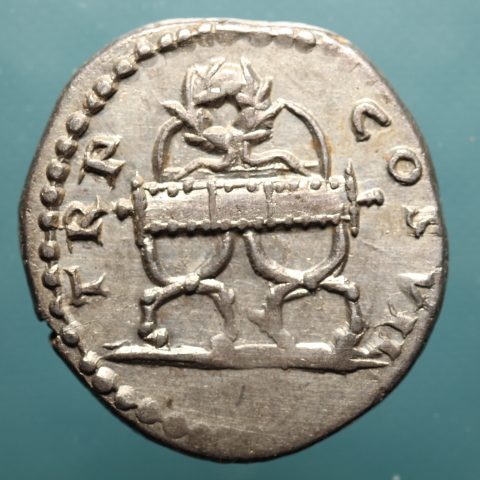


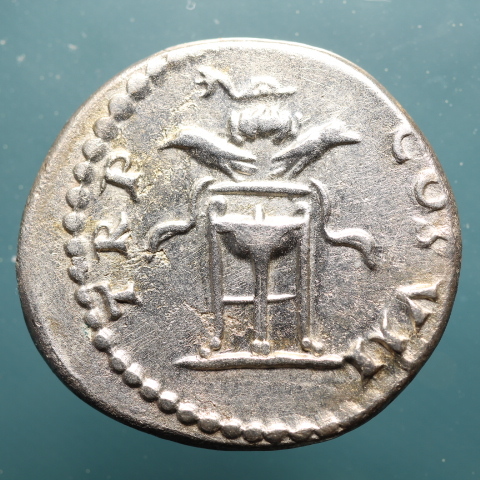
The coin under discussion today is the third reverse type from the left, RIC 3--
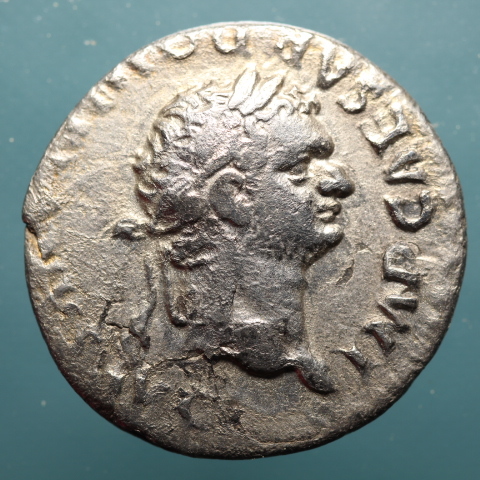

An empty throne, apparently, a pulvinar, but whose? If this is a seat of a deity, which one? The frame is triangular so I suppose we can assume that the deity is masculine, narrowing it down somewhat, but where is the identifier? Where is the distinctive attribute or piece of armor?
Last week we discovered that one of thereverses in the pulvinaria series wasn't a pulvinar after all. I fear we're about to make the same discovery here. As I mentioned before, the intended audience for this coin, the ancient Roman man in the street, would already know what this reverse signified. We non-ancient Romans, unfortunately, need a little help. Thankfully for us, at least one engraver felt that more explanation was necessary, and so, in what would one day constitute a rare variety, he added the lituus symbol. Here is RIC 3 var--
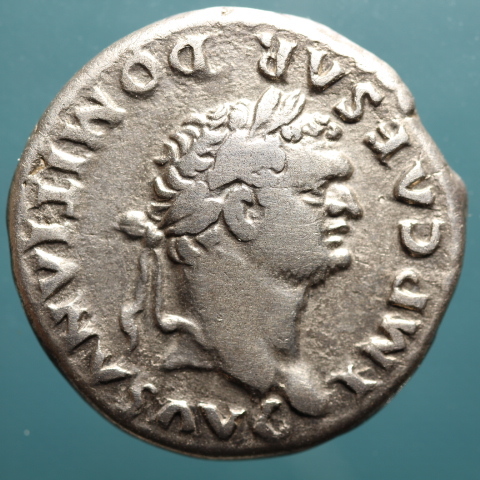
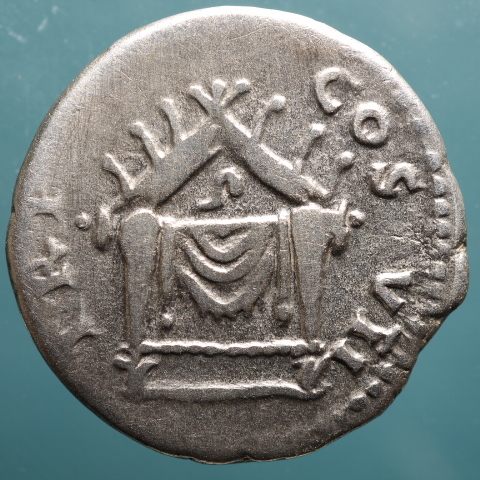
First of all I want to credit Andrew Short of Brock University in Ontario for alerting me to this reverse variety in the first place. After reading about it in his excellent blog I started looking for an example of my own, and after I found one I contacted him. Lect Short, in turn, credits David Atherton's help in identifying the lituus on this reverse. Of course Mr Atherton has been a friend of this website since I opened up shop here, proving it's a small world after all.
Above the table and beneath the triangular frame*, what looks like a drooping sock, is the aforementioned lituus, or properly speaking, the lituus symbol. Seth W Stevenson (A Dictionary of Roman Coins, London, 1889) draws a definite distinction between the lituus augurum, the actual augural staff itself, and the lituus auguralis, the pontifical symbol, that is to say, the symbol of the pontifex maximus. Look at my coin again; rather than the lituus instrument drawn from life, this is clearly a symbolic drawing of that object.
Turns out that the lituus, the distinctive identifier on this reverse, doesn't identify a god at all but the pontifex maximus, the chief priest, the Pope of ancient Rome, if you will. Pontifex Maximus was an honor and obligation bestowed upon Domitian by the senate on Day One as part of the initial imperial package (see my blog article). I would like to emphasize this point: most of the Roman general public didn't need this clarification; they already knew, without seeing the lituus, that this reverse type referred to the highest pontifical office. However, for us post-moderns, the lituus symbol identifies Domitian himself as the subject of this reverse type. Domitian is Pontifex Maximus.
In the regular issues struck at the same time as this commemorative issue, all of the obverse inscriptions contain either the phrase PONT or else P M, pontifex maximus, chief priest. And that is precisely what this reverse illustrates--let me say it again--Domitian is (already) Pontifex Maximus!
*The engraver of the lituus reverse took great pains to describe the triangular structure above the throne (if that's what it is; since it isn't a pulvinar, it might actually be a table). I would like to take just a moment to look at the typical reverse and the variant side by side--
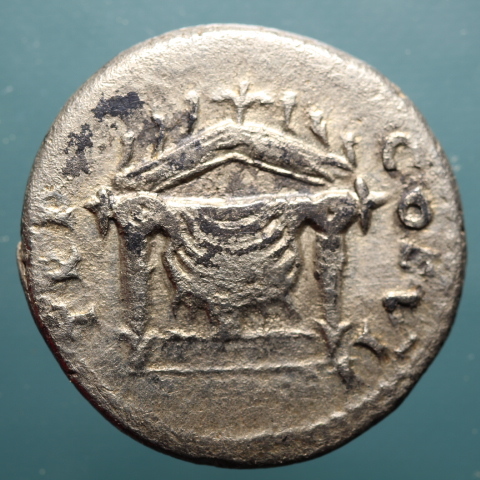
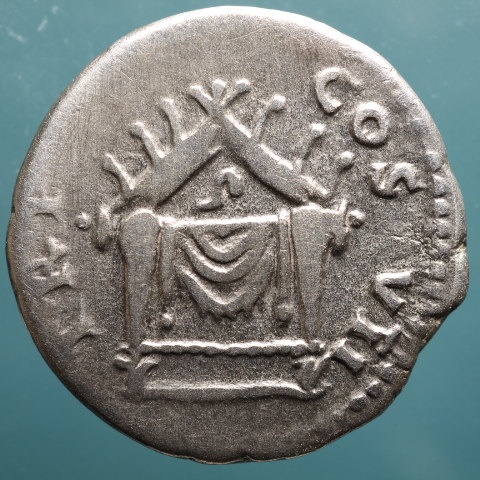
RIC describes the structure as "a triangular frame decorated with corn ears." That seems to me to be an accurate identification. The variant on the right shows what appears to be joined timber, two great pine logs notched at the tops and resting against one another. Especially the log on the right seems to be notched at the bottom as well so that the arm of the throne will hold it in in place. The coin reverse on the left doesn't dispute any of this, it just doesn't highlight it (but note the same v-shaped notch on the right of that structure). On the other hand, what are clearly corn ears on the left appear to be something else on the variant. It looks to me as though possibly the trunk's branches have been roughly lopped off but not entirely removed; note how the branches angle slightly upward like a pine tree's; at any rate it sure doesn't look like corn ears.
Next: The Commemorative Issue of 81: Part 4, Domitian denarius, RIC 5, duck season, rabbit season.

